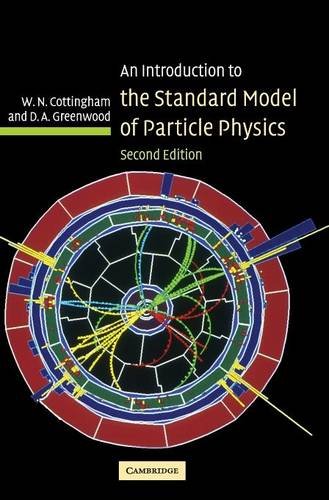An Introduction to the Standard Model of Particle Physics pdf download
Par mangino john le vendredi, juillet 22 2016, 06:13 - Lien permanent
An Introduction to the Standard Model of Particle Physics by D. A. Greenwood, W. N. Cottingham


An Introduction to the Standard Model of Particle Physics D. A. Greenwood, W. N. Cottingham ebook
Publisher: Cambridge University Press
Page: 294
Format: pdf
ISBN: 0521852498, 9780521852494
The standard model is the name given in the 1970s to a theory of fundamental particles and how they interact. This advanced summer school on LHC Physics will cover a broad spectrum of experimental and theoretical activity in particle physics, from the searches for the Higgs boson and physics beyond the Standard Model, to studies of Quantum Chromodynamics, the B-physics sector and The lectures and informal discussions are by recognised leaders in their field and include an introduction to the LHC itself as well as the theoretical and phenomenological framework of hadron collisions. The authors try to motivate and introduce some basic concepts of category theory for an audience familiar with standard physics and in particular with quantum mechanics. �This, perhaps, shows that we should take a step back and start thinking anew on the problems for which SUSY-based phenomenology was introduced,” Shifman said. Even the quantum vacuum of the standard model of particle physics is chiral [1], so that the behavior of the left-handed and right-handed elementary particles (quarks and leptons) are essentially different. The goal is to discover hints of physics beyond the Standard Model of particle physics – but tantalizing glimpses of new physics have been harder to spot than many physicists had expected. �Physics” is the study of Nature and natural phenomena. Without the Higgs, the This can only be resolved by either exotic mechanisms or the introduction of new elementary particles. Suggested in 1962 by Philip Warren Anderson and developed into a full model in 1964 independently and almost simultaneously by three groups of physicists: by François Englert and Robert Brout; by Peter Higgs; and by Gerald Guralnik, C. So far, no hints of “new physics” beyond the Standard Model — the accepted set of equations describing the known elementary particles — have shown up in experiments at the Large Hadron Collider, operated by the European research laboratory CERN outside Geneva, or anywhere else. For structure group G = B U ( 1 ) the circle 2-group this yields the Kalb-Ramond .. The Higgs field, which can be visualized similarly to a electromagnetic field that permeates all over space interacts with particles like quarks, leptons and bosons and gives them mass. It comes in myriad incarnations. Higgs mechanism aside though, the Standard Model of particle physics needs the Higgs particle. Specifically for G a discrete quotient of SU ( 3 ) × SU ( 2 ) × U ( 1 ) this is the gauge-field part of the standard model of particle physics. 1) that emerge under rotation, small differences in the total energy are to be expected, and the situation with l ̂ ∥ - Ω arises from introducing the circular skyrmion in the disk, which has lower energy. One of the consequences is the .